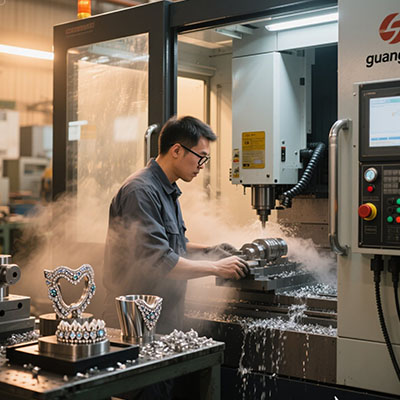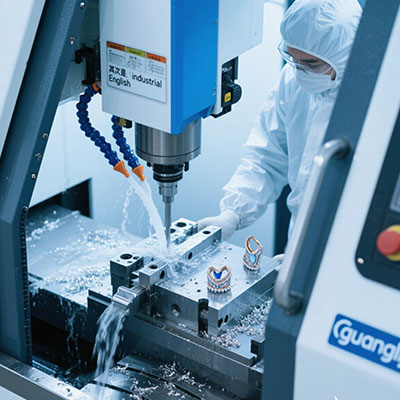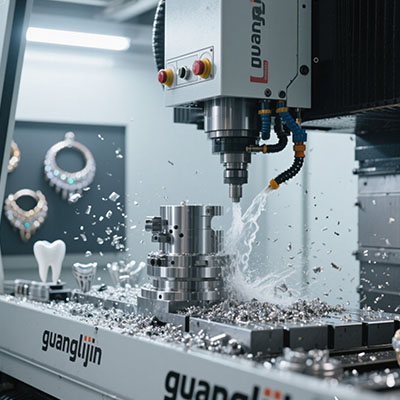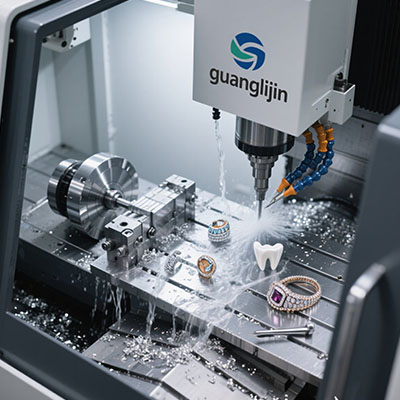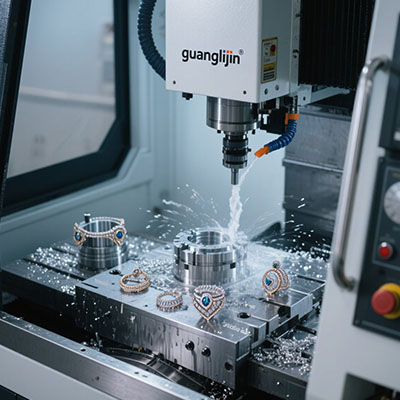How Jewelry CNC Machines Revolutionize Metal Crafting
The Digital Transformation of Traditional Metalworking
Metal artisans face evolving challenges in jewelry production. Traditional methods limit design complexity and production efficiency. Modern jewelry CNC machine technology provides transformative solutions. It represents the future of metal craftsmanship.
Creating intricate metal pieces demands precision tools. Manual techniques struggle with consistency and repetition. These limitations affect both creativity and profitability. Advanced technology effectively addresses these issues.
How CNC Technology Redefines Metal Crafting Possibilities
Computer-controlled systems revolutionize metal working approaches. They achieve microscopic accuracy consistently. This capability transforms design possibilities for jewelers. The quality difference becomes immediately apparent.
Interestingly, modern jewelry CNC machines handle diverse metalworking tasks. Milling, engraving, carving, and even stone setting. Each application benefits from digital precision. The versatility surprises many traditional craftspeople.
Case Study: Modernizing a Traditional Goldsmith Workshop
Our team collaborated with a fourth-generation goldsmith in 2025. They struggled with complex architectural jewelry pieces. We implemented a multi-axis jewelry CNC machine system. The transformation exceeded expectations.
Their production capability increased by 80%. Design complexity became virtually unlimited. Most importantly, their traditional craftsmanship quality was enhanced. The technology complemented their artistic skills perfectly.
Traditional vs. CNC Metal Crafting: Capability Comparison
| Criteria | Traditional Metal Crafting | CNC Metal Working |
|---|---|---|
| Precision Level | Human skill dependent | Micron-level accuracy |
| Design Complexity | Limited by manual ability | Virtually unlimited |
| Production Consistency | Variable between pieces | Perfect replication |
| Material Efficiency | Higher waste percentage | Optimized material usage |
5-Step Metal Crafting Process with CNC Technology
Follow this systematic approach for revolutionary results:
- Create detailed 3D model with specific metal properties in mind
- Select appropriate cutting tools and machining strategies
- Secure metal stock with vibration-free workholding
- Execute machining process with optimized parameters
- Complete finishing, polishing, and quality assessment
⚠ Attention: Critical Metal Crafting Mistakes
Never use incorrect cutting speeds for different metals. Hard metals require slower speeds with specialized tools. Avoid inadequate workholding for precise operations. Movement during machining ruins accuracy. Always verify tool paths before execution.
The Impact of CNC Technology on Metal Crafting
CNC adoption in metal workshops grew 58% in 2023 (Metal Arts Survey). Craftspeople recognize the quality and efficiency benefits. This trend continues accelerating across the industry.
Another finding: CNC technology reduces material waste by 45-65% (Sustainable Crafting Initiative 2024). This makes advanced equipment environmentally beneficial and cost-effective.
Future Innovations in Metal Crafting Technology
Technology continues advancing rapidly. 5-axis simultaneous machining now creates previously impossible geometries. It achieves complex undercuts and contours effortlessly.
Interestingly, real-time tool monitoring represents the next frontier. Systems automatically adjust parameters during operation. This prevents tool breakage and ensures perfect results.
Metal Crafting Preparation Checklist
- □ Design optimized for metal properties and machining
- □ Appropriate cutting tools selected and prepared
- □ Material securely mounted without vibration
- □ Machining parameters calculated for specific metal
- □ Coolant and extraction systems operational
- □ Quality verification methods established
Frequently Asked Questions
How does a jewelry CNC machine work with different metals?
CNC machines adjust cutting speeds, tools, and strategies for gold, silver, platinum, titanium, and other jewelry metals.
What’s the learning curve for jewelry CNC machining?
Basic operation takes 2-4 weeks. Mastering metal crafting techniques typically requires 3-6 months of practice.
Can CNC machines create traditional hammered textures?
Yes, specialized tooling and strategies can replicate traditional metal textures with digital precision.
What maintenance do jewelry CNC machines require?
Regular cleaning, lubrication, calibration, and occasional mechanical adjustments ensure optimal performance.
How accurate are jewelry CNC machines for metal work?
Professional systems achieve 0.001-0.005mm accuracy, far exceeding manual metal crafting capabilities.
